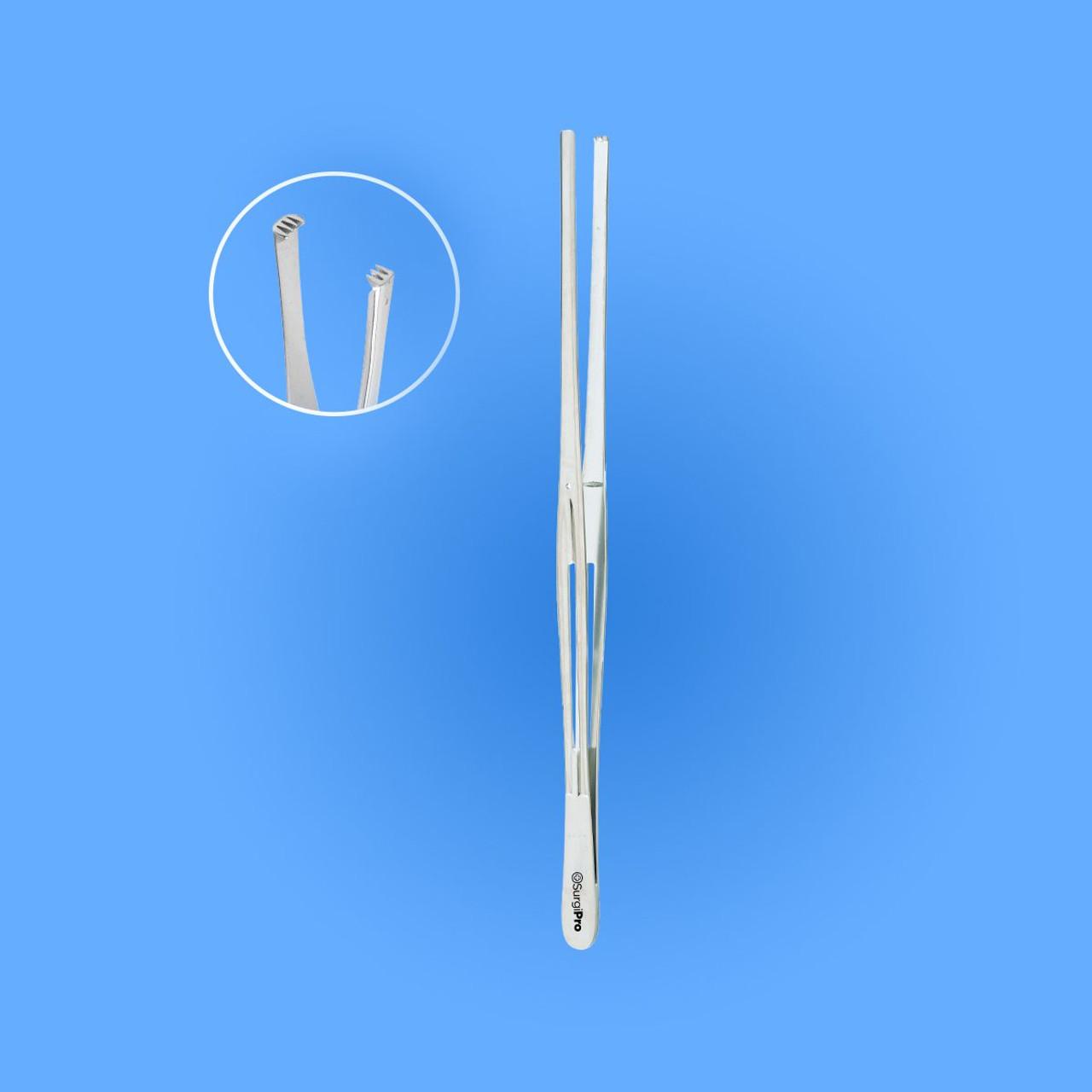In the world of surgical instruments, few tools are as versatile and essential as the Kelly tissue forceps. Named after Howard Atwood Kelly, a pioneering American gynecologist, these forceps have become a staple in surgical procedures due to their precision, functionality, and reliability.
What Are Kelly Tissue Forceps?
Kelly tissue forceps, often referred to simply as Kelly forceps, are hemostatic instruments used primarily to clamp blood vessels and manipulate tissues during surgical procedures. These forceps are characterized by their straight or curved jaws with serrated tips, which provide a firm grip on tissues without causing significant damage.
Key Features of Kelly Forceps
-
Design: Kelly forceps are typically 5.5 to 7 inches in length, making them suitable for a variety of surgical applications. The forceps can be either straight or curved, depending on the specific needs of the procedure.
-
Serrated Tips: The tips of Kelly forceps are serrated, allowing for a secure grip on tissues and blood vessels. This feature minimizes the risk of slippage, which is crucial during delicate operations.
-
Locking Mechanism: These forceps are equipped with a ratchet locking mechanism that enables the surgeon to lock the forceps in place, providing steady and continuous pressure on the clamped tissue or vessel.
Uses of Kelly Tissue Forceps
Kelly forceps are used in a variety of medical procedures, including:
-
Hemostasis: One of the primary uses of Kelly forceps is to control bleeding during surgery. The forceps can clamp off blood vessels, preventing excessive blood loss and providing a clear field for the surgeon.
-
Tissue Manipulation: These forceps are used to hold and manipulate tissues, allowing for greater precision during dissection and suturing.
-
Wound Closure: Kelly forceps can assist in wound closure by holding tissues in place while sutures or staples are applied.
-
Foreign Body Removal: The precision of Kelly forceps makes them ideal for removing foreign bodies from wounds or cavities.
Importance in Surgery
The versatility and reliability of kelly instrument surgical make them indispensable in the operating room. Here are a few reasons why they are so crucial:
Precision and Control
The design of Kelly forceps allows surgeons to exert precise control over tissues and blood vessels. This precision is essential for minimizing tissue damage and ensuring successful surgical outcomes.
Versatility
Kelly forceps can be used in a wide range of surgical procedures, from minor outpatient surgeries to complex operations. This versatility reduces the need for multiple specialized instruments, simplifying the surgical setup and reducing costs.
Safety
The serrated tips and locking mechanism of Kelly forceps enhance the safety of surgical procedures by providing a secure grip on tissues and blood vessels. This reduces the risk of accidental slips and ensures that tissues are handled with care.
Efficiency
By controlling bleeding and manipulating tissues effectively, Kelly forceps help streamline surgical procedures, making them more efficient. This efficiency can lead to shorter operation times and quicker patient recovery.
Conclusion
Kelly tissue forceps are a testament to the enduring importance of well-designed surgical instruments. Their combination of precision, versatility, and reliability makes them an essential tool in the operating room. Whether controlling bleeding, manipulating tissues, or assisting in wound closure, Kelly forceps play a vital role in ensuring the success of surgical procedures. As medical technology continues to advance, the foundational role of instruments like Kelly forceps remains unchanged, highlighting their timeless value in the field of surgery.

